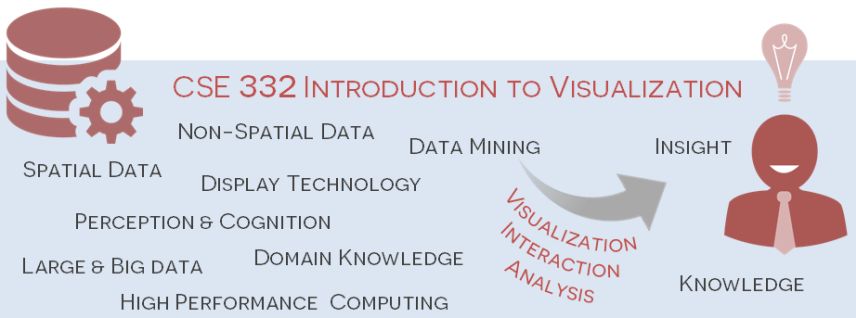This course is an introduction to both the
foundations and applications of visualization and visual analytics, for the
purpose of understanding complex data in science, medicine, business, finance,
and many others. It will begin with the basics - visual perception, cognition,
human-computer interaction, the sense-making process, data mining, computer
graphics, and information visualization. It will then move to discuss how these
elementary techniques are coupled into an effective visual analytics pipeline
that allows humans to interactively think with data and gain insight. Students
will get hands-on experience via several programming projects, using popular
public-domain statistics and visualization libraries and APIs. This course is
offered as both CSE 332 and ISE 332. The number of credits is 3. Check out
this
playlist that has some of the final project videos of the Fall 2023
batch (here are earlier playlists:
2022)
CSE 214 or CSE 260; MAT 211 or AMS 210; AMS 110 or AMS 310; CSE or ISE major
For additional reference and on
reserve in the Science & Engineering library:
There will be five lab assignments to provide you with hands-on experience in visual data analytics. You will use python for data analytics and the popular javascript library D3.js for interactive information visualization directly in the web browser.The lab assignements will be:

